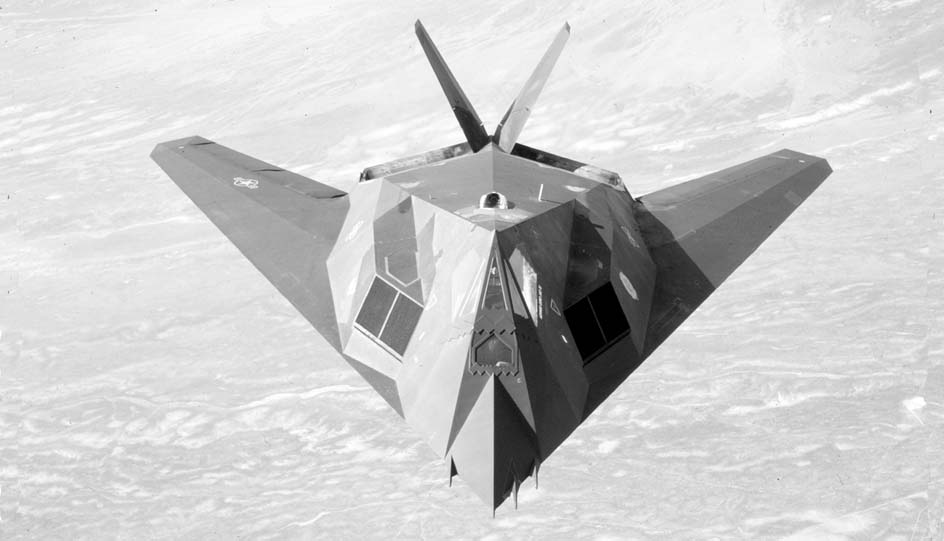

| Aircraft | F-117A "Nighthawk"(Lockheed Aeronautical Systems Co.) | |
| Type | Bomber/attack | |
| Year | 1982 | |
| Engine | Two General Electric F404 engines | |
| Wingspan | 43 feet, 4 inches (13.3 meters) | |
| Length | 65 feet, 11 inches (20.3 meters) | |
| Height | 12 feet, 5 inches (3.8 meters) | |
| Weight | 52,500 pounds (23,625 kilograms) | |
| Max. speed | 561 knots | |
| Operating speed | Mach 0.9 | |
| Range | 570 nm (unrefueled) | |
| G + limit | 6 | |
| Crew | 1 | |
| Armament | two GLU-109B low-level laser-guided
bombs up to 2,000 lbs.
two GBU-10/GBU-27 laser-guided glide weapons up to 2,000 lbs. two AGM-65 Maverick up to 2,000 lbs. two AGM-88 HARM ASMs up to 2,000 lbs. specially fit AIM-9 Sidewinderup to 2,000 lbs. Note:The F-117A can only carry two weapons in its payload compartment.up to 2,000 lbs. |
USAF F-16 multi-mission fighters were deployed to the Persian Gulf in 1991 in support of Operation Desert Storm, where more sorties were flown than with any other aircraft. These fighters were used to attack airfields, military production facilities, Scud missiles sites and a variety of other targets.
Source-United States Air Force